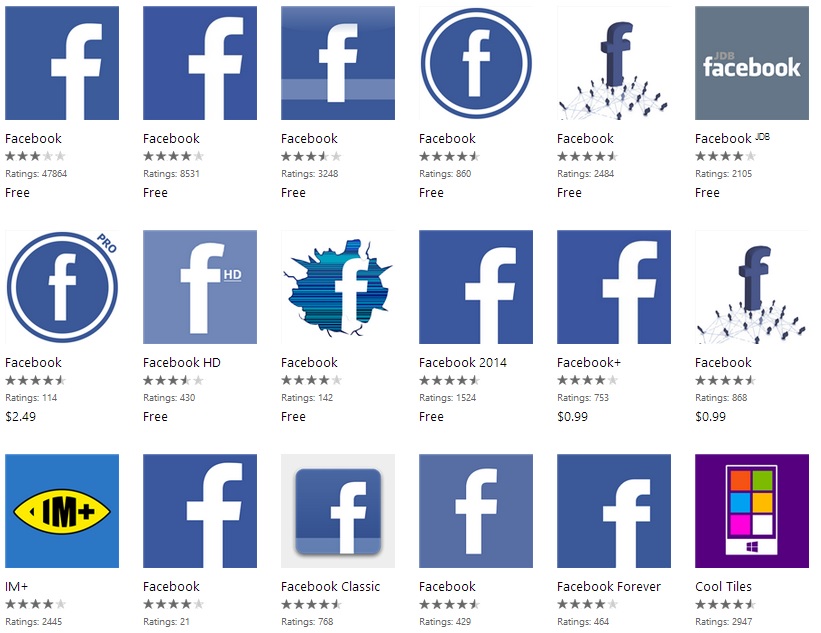Getting Rid of Fakes
Fake Apps and Their Implications
A screenshot shows the numerous copies of Facebook on the Windows Store
December 12, 2017
Cell phones are an essential part of many people’s lives, especially teenagers. Most teens are nearly glued to their phones, always keeping their phones with them even if they are not in use. But a new, potentially dangerous, problem targets one of the most essential features of modern smartphones- applications. Fake apps and similarly created imitation apps can be a risk to the security of millions of people, earning money through advertisements and relying on consumers to be unaware of the possible risks.
There are two main methods that these tricky developers use in order to create believable fake apps. The first method is to “fill a gap in the market,” which often involves creating an app for a service or company that does not have an official app. Take, for example, the app for Radioshack. Radioshack, an electronics store that went bankrupt in 2015, never has had its own app. Yet the app store has multiple imitations popping up, employing the company’s logo in an attempt to gain downloads. This same technique also works across platforms as some developers are creating mock “official” apps across platforms. For example, they can create an Android version of an app that is accessible only on the Apple App Store, or vice versa.
The second method also relies on a customer’s ignorance, as developers will develop apps that look very similar to pre-existing apps. Of course, the objective is for the consumers to not notice the difference, accidentally downloading the fake version of an app rather than the real one. The Economist discovered that 25 of the 50 top-selling apps in the Google Play Store have fake versions of them. One example of this is an app called MyGoogleTranslate, a rip-off of the actual Google Translate app.
Apple and Google regulate their app stores the most, but even then, fakes manage to slip through the cracks. Other, less prominent app stores are even more filled with such imposters, which is slowly becoming a pressing issue. These apps have a range of negative effects, each one usually filled with malicious code that can damage the phone or steal important information. In fact, Serval, a research group at the University of Luxembourg, discovered that “ a fifth of all Android app-based malware is hidden in fake apps.” Some of these apps try and obtain bank account information, some manipulate what ads are visible on the phone, and yet others silently drain phone battery. The latter is especially common, as Alice Ding (10) discovered when she
“downloaded the wrong app” and “suddenly [her] battery was dying way faster than usual.”
While it would be difficult to completely get rid of such fake apps, the best solution would be to raise awareness. By being more conscious of what apps they are downloading, consumers can reduce the influence these mal-intentioned developers have. So watch out for suspicious, likely fake apps, and be careful what is downloaded onto any phone.





































